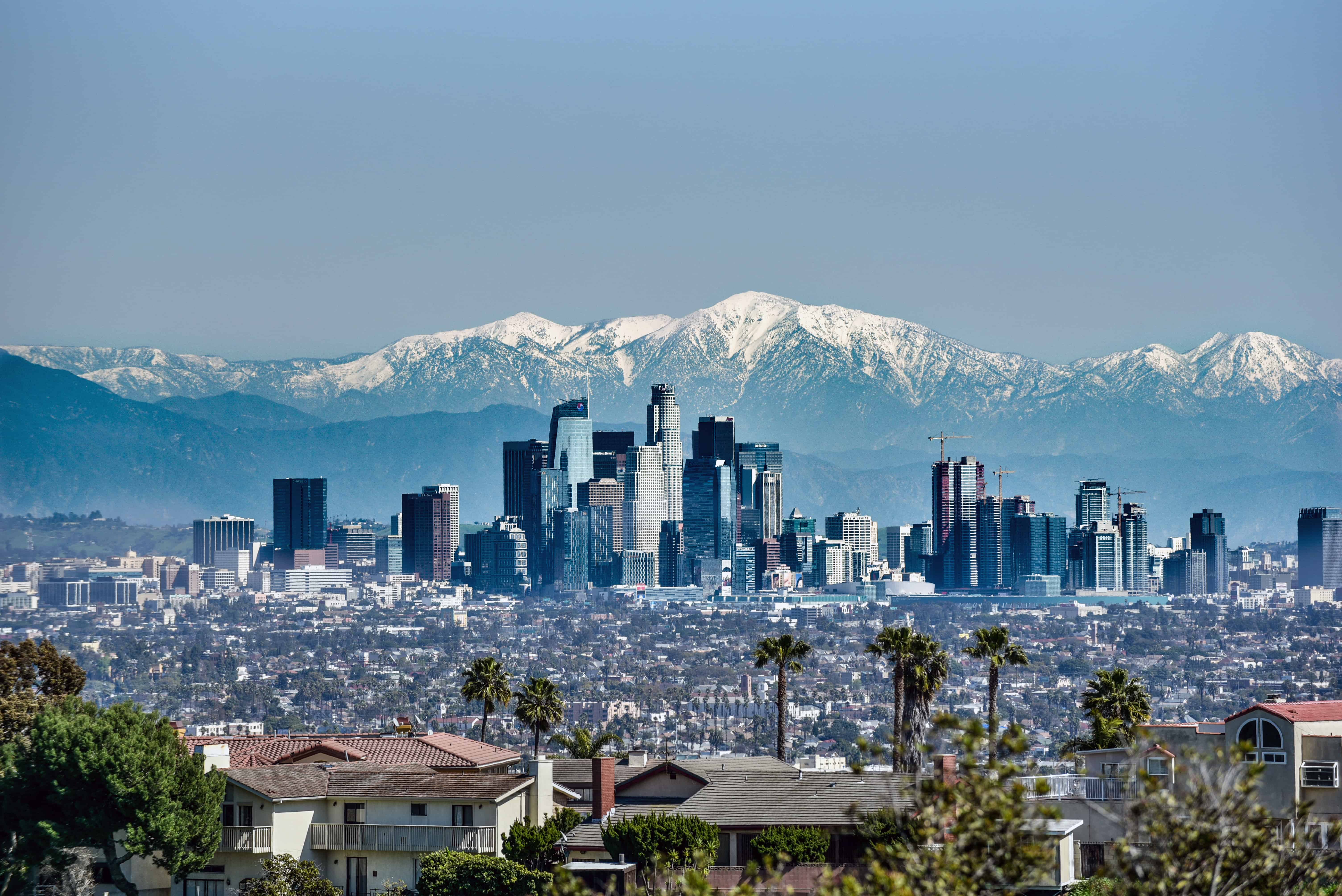California is one of the largest states in the United States. First, California is the most populous state, with a population of 39 million people. It has almost 40 million more people than the second-most populated state, Texas. In fact, California has a higher population than the entire country of Canada! This Westcoast state also has the highest gross domestic product (GDP) of any U.S. state.
It has the fifth-largest economy in the world, behind only the United States, China, Japan, and Germany. Due to its large population and economy, the state has a large impact on the United States and the world. It is a major cultural and economic hub. California is also the third-largest state by area, behind only Alaska and Texas.
This guide explores the largest cities in the state by population, total area, and economic impact.
Largest Cities in California by Population
According to the United States Census Bureau, California has an estimated population of 39,029,342. The five largest cities in California by population are Los Angeles, San Diego, San Jose, San Francisco, and Fresno. This section explores the population and demographic trends of these cities.
| Ranking | City | Population |
|---|---|---|
| 1 | Los Angeles | 3,898,747 |
| 2 | San Diego | 1,386,932 |
| 3 | San Jose | 1,013,240 |
| 4 | San Francisco | 808,437 |
| 5 | Fresno | 542,107 |
1. Los Angeles

Los Angeles was founded by Spanish settlers in 1781. The Tongva People are native to Los Angeles.
©Chones/Shutterstock.com
Los Angeles is the largest city in California by population, area, and economic impact. According to the 2020 United States Census, Los Angeles has a population of 3,898,747. The population density of Los Angeles is 8,304.22 people per square mile. Los Angeles is a racially and culturally diverse city. According to the 2020 census, the population is 46.9% Hispanic or Latino, 28.9% white, 11.7% Asian, and 8.3% black or African American. The city has long-established Mexican and Central American communities. Los Angeles also has the second-largest population of Jewish people behind New York City.
2. San Diego
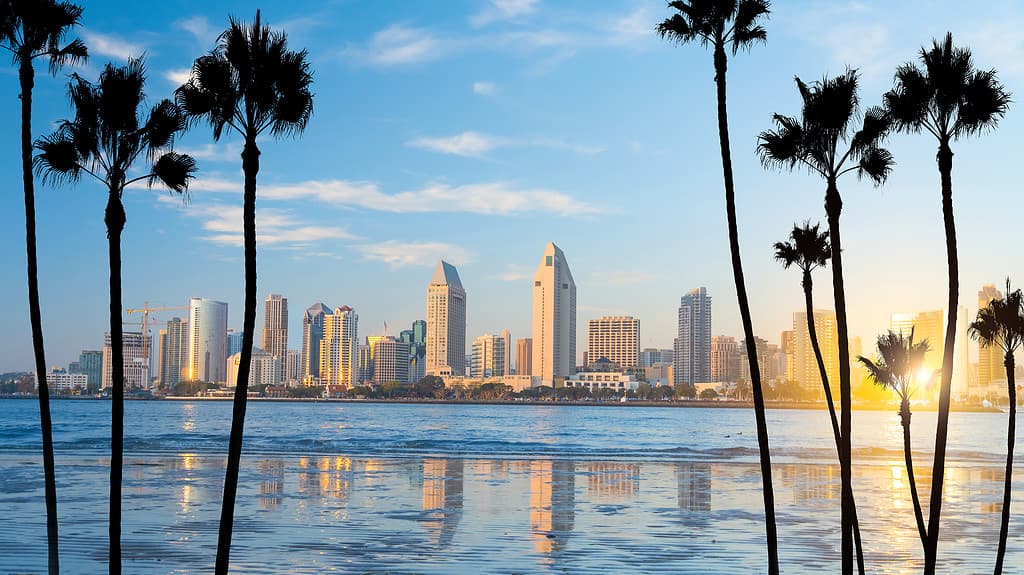
San Diego was founded by Spanish settlers in 1869. The Kumeyaay People are native to San Diego.
©iStock.com/f11photo
San Diego is the second-largest city in California, located on the United States–Mexico border. According to the 2020 United States Census, San Diego has a population of 1,386,932. The population density of San Diego is 4,255.96 people per square mile. According to the 2020 Census, San Diego is 40.7% white, 29.7% Hispanic or Latino, 17.6% Asian, and 6.6% black or African American. San Diego also has the seventh-highest population of gay residents in the United States.
3. San Jose
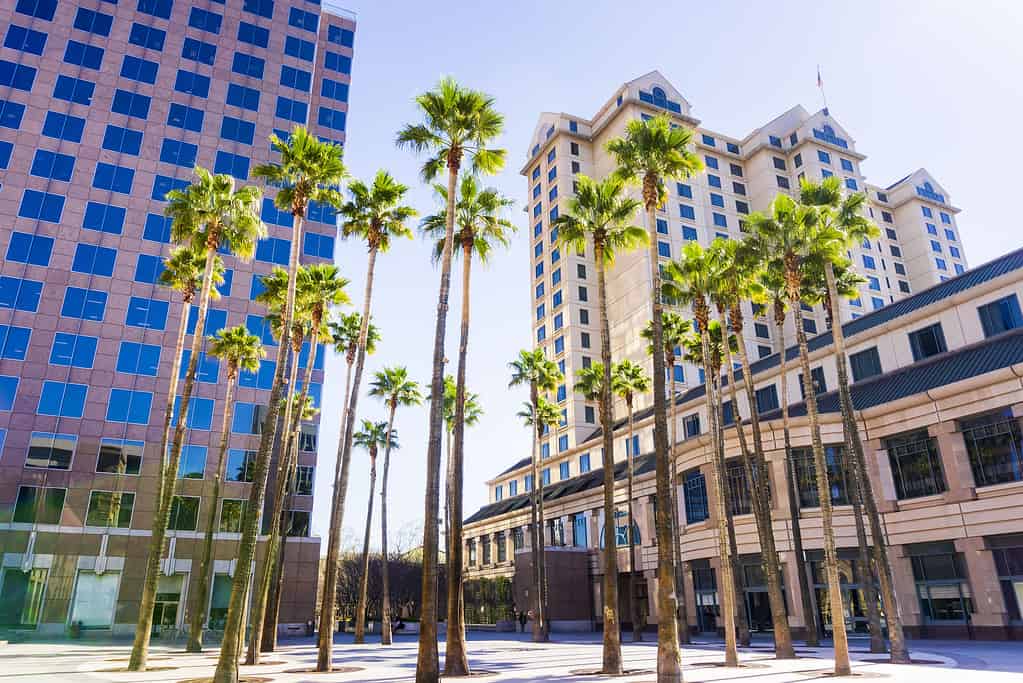
San Jose was founded by Spanish settlers in 1777. The Ohlone people are native to San Jose.
©iStock.com/Sundry Photography
San Jose is the most populous city in the San Francisco Bay Area of California. According to the 2020 United States Census, San Jose has a population of 1,013,240. The population density of San Jose is 5,684.69 people per square mile. According to the 2020 Census, the population of San Jose is 37.2% Asian, 31.0% Hispanic or Latino, 25.1% white, 7.9% mixed, and 2.9% black or African American. The population of San Jose has been decreasing since 2019, largely due to the high cost of living and lack of affordable housing.
4. San Francisco
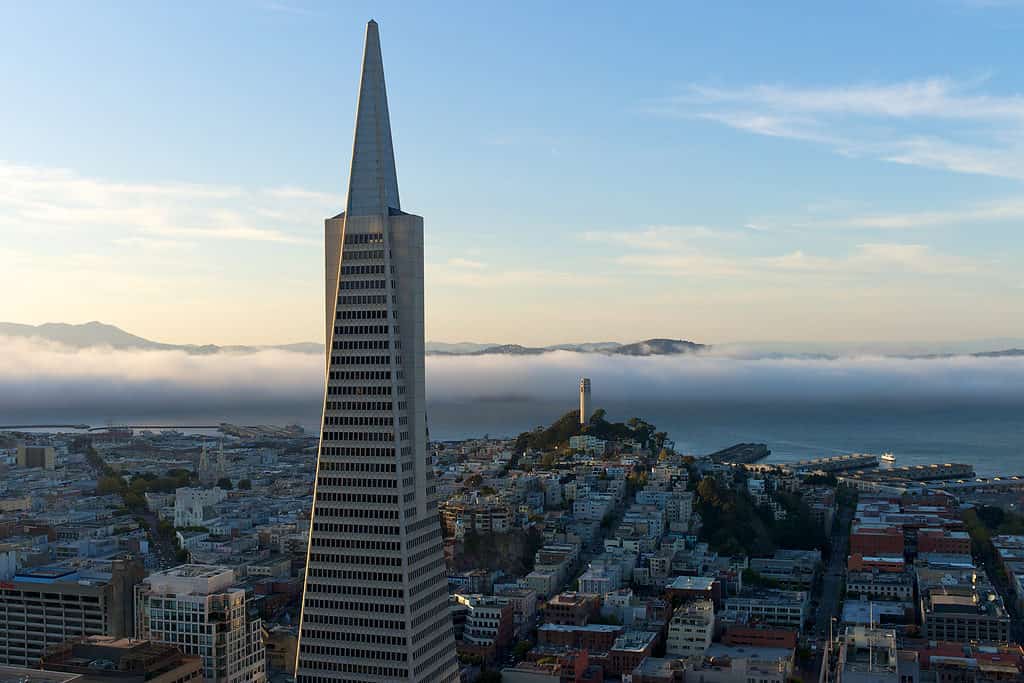
San Francisco was founded in 1776 by the Spanish. The Yelamu group of the Ohlone People are natives.
©Rudy Mareel/Shutterstock.com
San Francisco is located on the San Francisco Peninsula, which extends into the Pacific Ocean to form the San Francisco Bay. According to the 2020 United States census, San Francisco has a population of 808,437. San Francisco is the most densely populated city in California. Although it is the fourth-largest city in California by population, it is a mere 46.87 square miles in area. This puts the population density of San Francisco at 17,237.5 people per square mile. That’s more than twice the population density of Los Angeles! San Francisco has prominent Mexican, Chinese, and Filipino neighborhoods.
5. Fresno
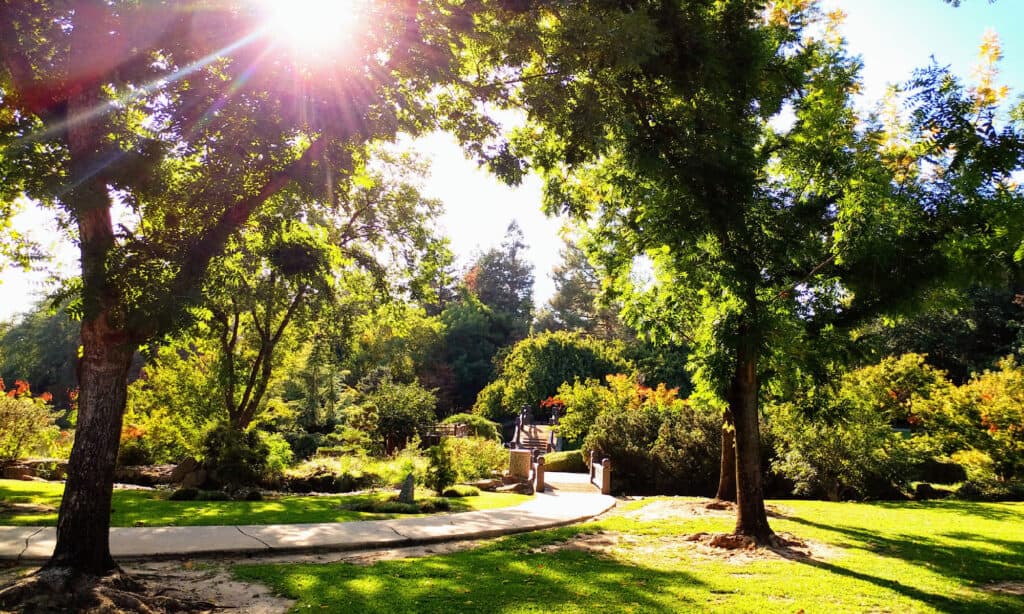
Fresno was founded in 1872 by the Spanish. The Yokuts and Miwok People are native to the Fresno area.
©iStock.com/AndreaCopp
Fresno is in the San Joaquin Valley of California, which sits west of the Sierra Nevada Mountain Range. According to the 2020 Census, Fresno has a population of 542,107. The population density of Fresno is 4,722.60 people per square mile. Fresno has prominent Armenian and Hmong communities.
Largest Cities in California by Area
With a total area of 163,695 square miles, California is the third-largest state. California’s geography is vast and varied. The largest cities in California by area are Los Angeles, San Diego, California City, San Jose, and Bakersfield. This section explores these five cities, including their geography, climate, and notable attractions.
| Ranking | City | Total Area (sq. mi.) |
|---|---|---|
| 1 | Los Angeles | 501.55 |
| 2 | San Diego | 372.42 |
| 3 | California City | 203.70 |
| 4 | San Jose | 181.36 |
| 5 | Bakersfield | 151.28 |
1. Los Angeles
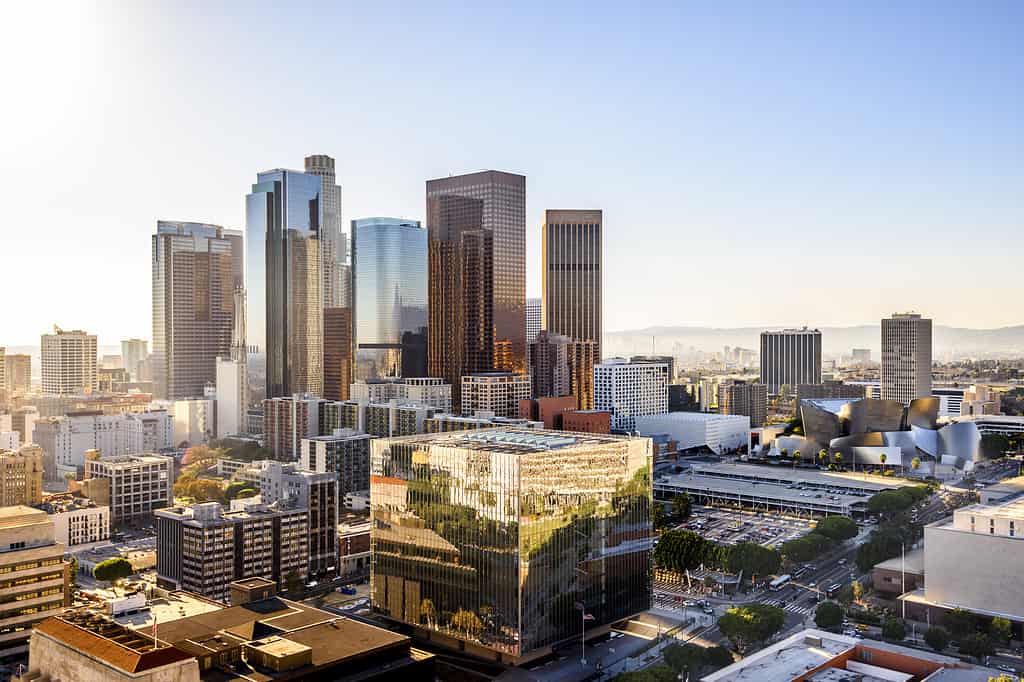
Los Angeles includes 468.7 square miles of land and 34.0 square miles of water.
©iStock.com/choness
Los Angeles has a total area of 501.55 square miles, making it the largest city in California by total area. The city is located in the Los Angeles Basin, between the Pacific Ocean and the San Gabriel Mountains. The Santa Monica Mountains lie north of the city, separating it from the San Fernando Valley. Los Angeles has a Mediterranean climate according to the Köppen climate classification system. Mediterranean climates have hot, dry summers and mild, wet winters. Los Angeles sees an average of only 35 days of rain per year. The land of Los Angeles varies between flat and hilly. The highest point in Los Angeles is Mount San Antonio, known by locals as Mount Baldy, at 10,064 feet. Additionally, Los Angeles is home to the La Brea Tar Pits. At these tar pits, natural asphalt seeps from the ground and has preserved many fossils.
2. San Diego
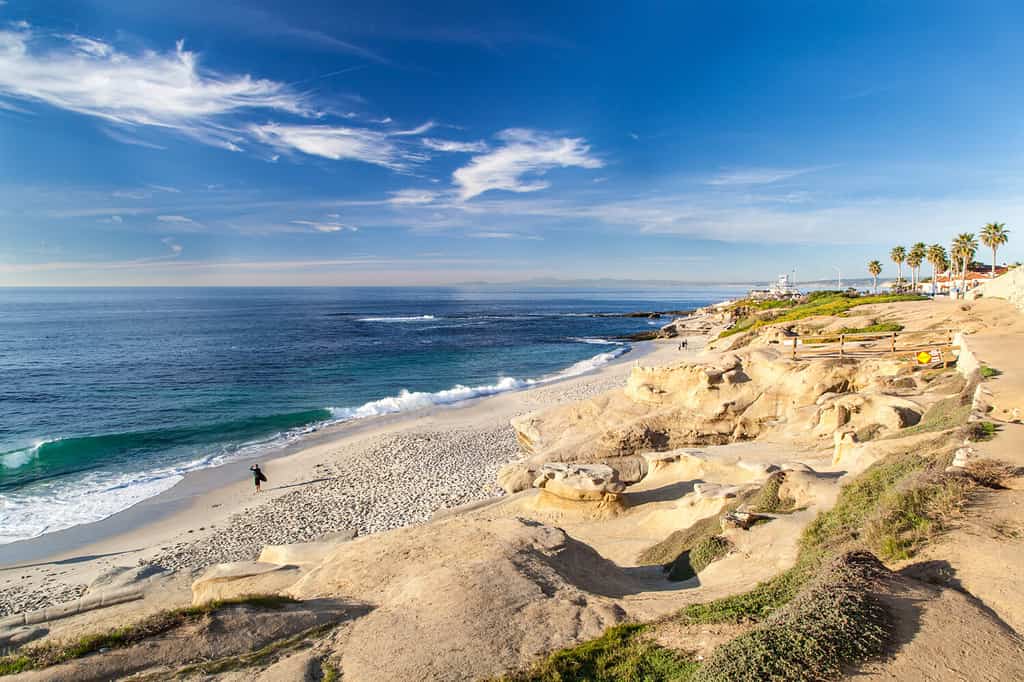
San Diego includes 325.88 square miles of land and 46.54 square miles of water.
©kan_khampanya/Shutterstock.com
San Diego is the second-largest city in California by area, with a total area of 372.42 square miles. It is located in Southern California on the coast of the Pacific Ocean. San Diego has a hot-summer Mediterranean climate according to the Köppen climate classification system. The summers in San Diego are warm and dry, while the winters are mild and wet. However, the diverse geography of San Diego creates many microclimates. A notable geographic attraction in San Diego is the Torrey Pines State Nature Preserve on the Pacific Ocean. Torrey Pines consists of 2,000 acres of coastline, including canyons and a lagoon that is important for marine birds.
3. California City
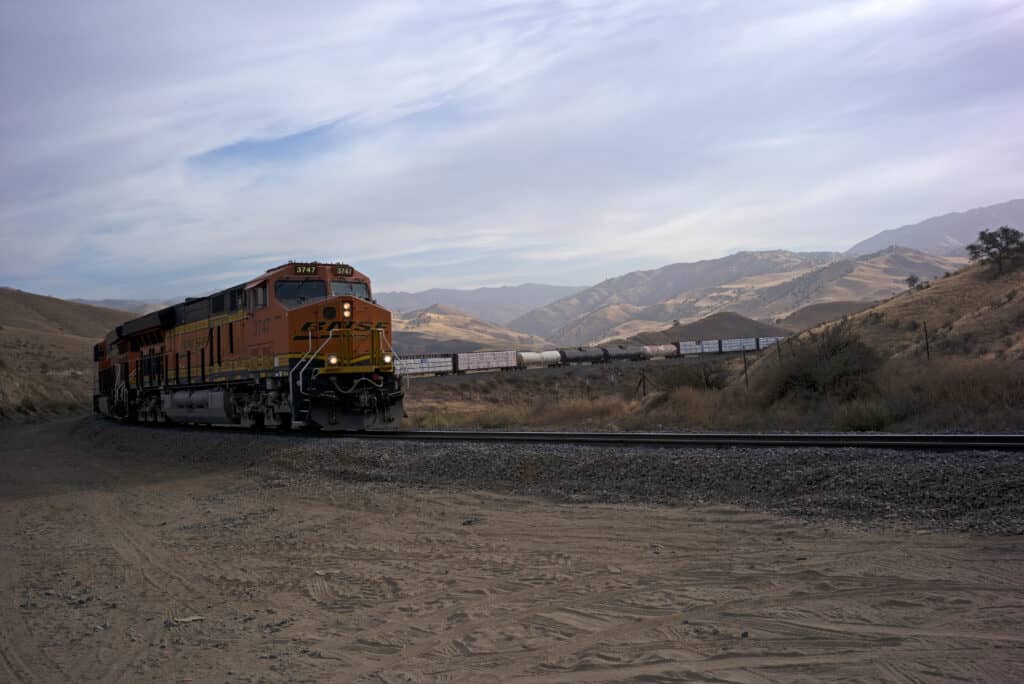
California City includes 203.61 square miles of land and only 0.09 square miles of water.
©Richard Thornton/Shutterstock.com
California City is located in Kern County, in the northern Antelope Valley of the Mojave Desert. It has a total area of 203.70 square miles. Although California City is large in size, its population is only 14,973. According to the Köppen climate classification system, California City has a desert climate. The city averages only 6.63 inches of rain per year. California City is 17 miles south of Red Rock Canyon State Park, which is known for its unique rock formations.
4. San Jose
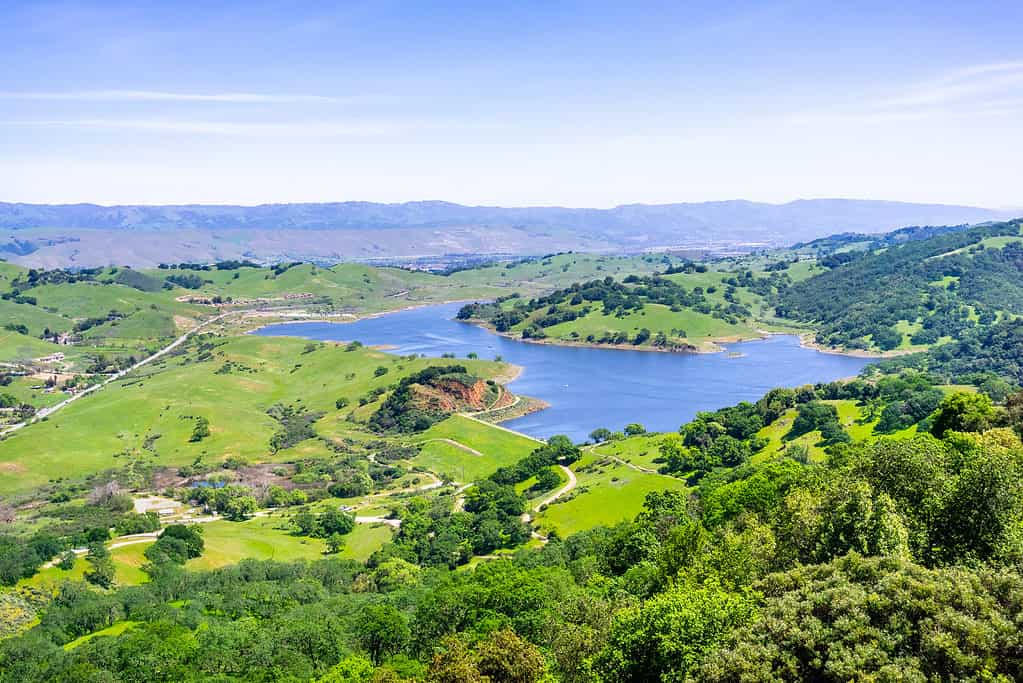
The deepest lake in San Jose is the Calero Reservoir, with a maximum depth of 76 feet.
©iStock.com/Sundry Photography
San Jose is located in the Santa Clara Valley on the San Francisco Bay. It is northeast of the Santa Cruz Mountains and west of the Diablo Mountains. San Jose has a total area of 181.36 square miles, including 178.24 square miles of land and 3.12 square miles of water. According to the Köppen climate classification system, San Jose has a Mediterranean climate. However, San Jose gets less rain than other cities in the San Francisco Bay Area because it is surrounded by mountains. The Los Gatos Creek runs through San Jose, and the Los Gatos Creek Trail is a popular place for walking and bicycling. The area just outside of San Jose includes several Santa Clara County parks and nature preserves.
5. Bakersfield
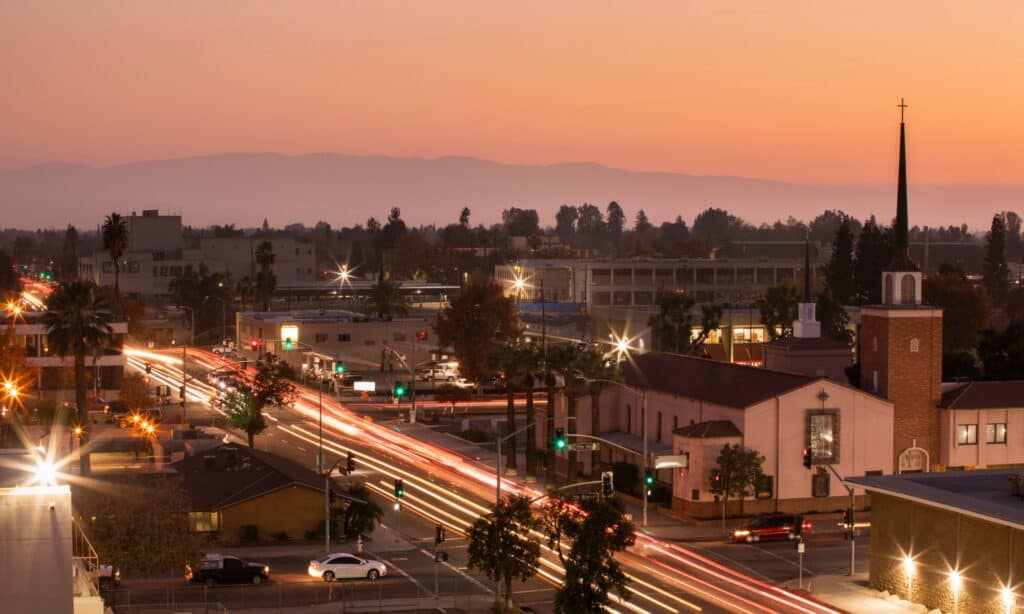
Bakersfield includes 149.81 square miles of land and 1.46 square miles of water.
©iStock.com/MattGush
Bakersfield is located in the Southern San Joaquin Valley of California. Bakersfield has a total area of 151.28 square miles. The city lies just west of the Sierra Nevada Mountain Range. According to the Köppen climate classification system, Bakersfield has a hot arid climate. Summers in Bakersfield are hot and dry, while winters are mild with cold nights. Bakersfield gets only 6.36 inches of rain per year. Bakersfield shares a border with the Sequoia National Forest to the east. Sequoia National Forest is a 1,193,315-acre forest in the Southern Sierra Nevadas. The forest has 38 groves of Giant Sequoia trees, which can grow to be over 300 feet tall.
Largest Cities in California by Economic Impact
California’s economy is massive and diverse. It has the highest gross domestic product (GDP) of any U.S. state. California is the fifth-largest economy in the world, behind the United States, China, Japan, and Germany. In 2022, California’s GDP was a whopping 3.59 trillion U.S. dollars.
Gross domestic product is calculated by metro area rather than by city. This list features the three largest metro areas in California by GDP. Each of these metro areas is a combination of three major cities.
| Ranking | Metro Area | GDP (2022) |
|---|---|---|
| 1 | Los Angeles, Anaheim, Long Beach | 1.1 trillion USD |
| 2 | San Francisco, Oakland, Berkeley | 669 billion USD |
| 3 | San Jose, Sunnyvale, Santa Clara | 410 billion USD |
1. Los Angeles, Anaheim, Long Beach
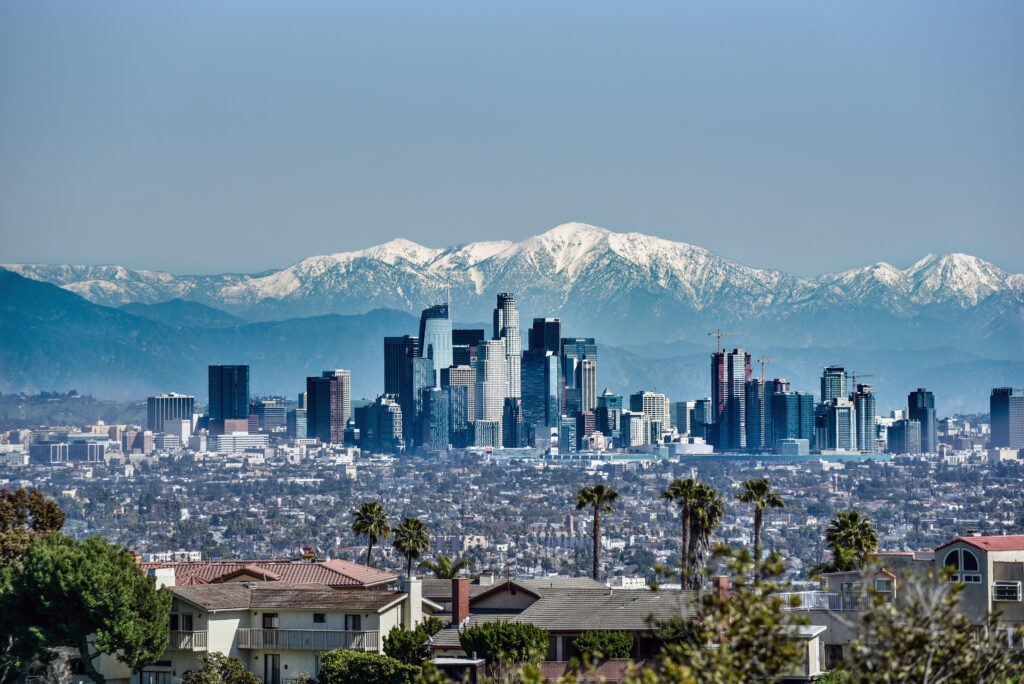
Los Angeles has one of the busiest ports in the United States.
©John Dvorak/Shutterstock.com
In 2022, the GDP of the Los Angeles, Anaheim, and Long Beach area was 1.1 trillion United States Dollars. The Los Angeles economy has many prominent sectors, including entertainment, technology, petroleum, fashion, tourism, education, and healthcare. The largest non-government employers in Los Angeles are Kaiser Permanente, University of Southern California, Northrop Grumman Corporation, Providence Health, and Target. Many Los Angeles residents work in creative industries, and the city is home to more artists, writers, and musicians than any other city in the world.
2. San Francisco, Oakland, Berkeley
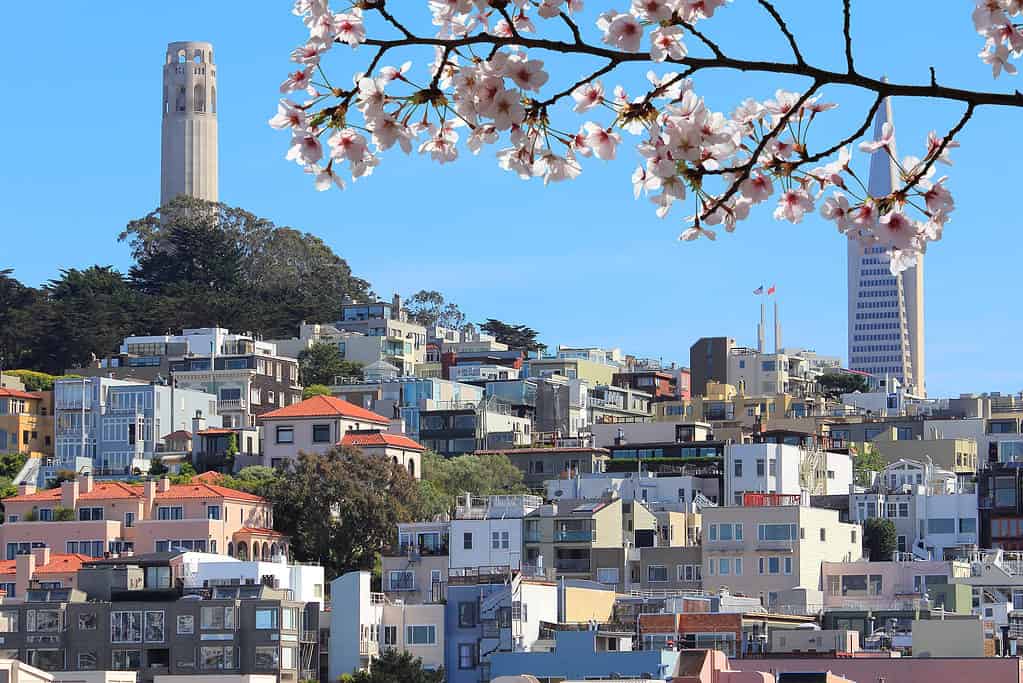
San Francisco became an economic hub during the California Gold Rush of the 19th century.
©iStock.com/tupungato
In 2022, the GDP of the San Francisco, Oakland, and Berkeley area was 669 billion United States Dollars. San Francisco’s key industries are technology, education, and healthcare. The largest non-government employers are Salesforce Incorporates and United Airlines. University of California, San Francisco Health is the second-largest employer in the city. San Francisco County has the third-highest median home price of any county in the U.S. The average home in San Francisco County costs $1,297,030.
3. San Jose, Sunnyvale, Santa Clara
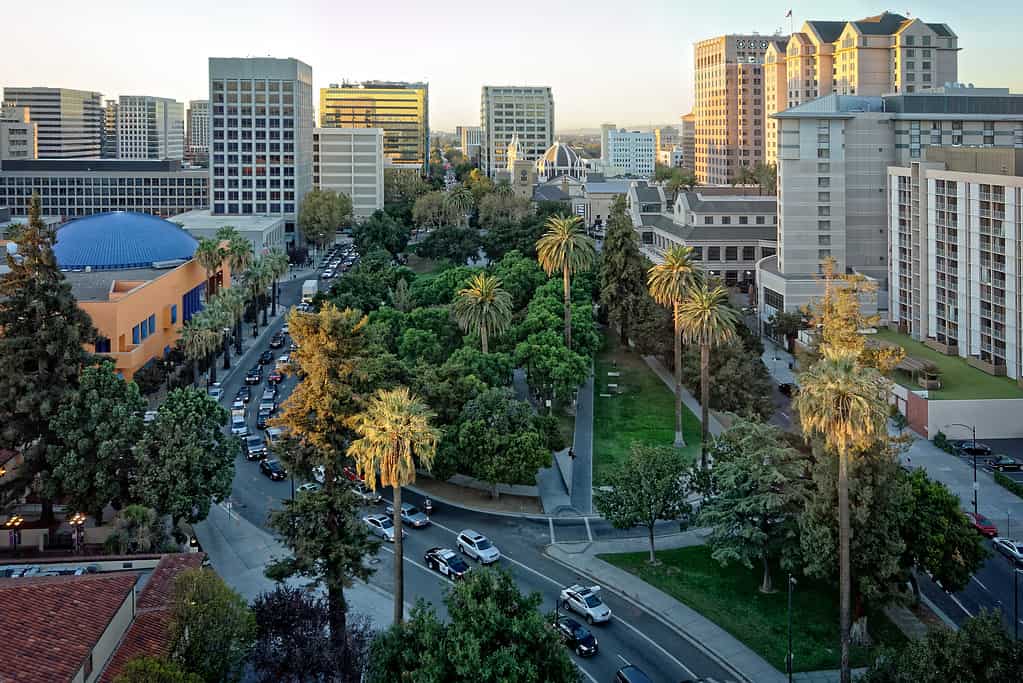
San Jose is the heart of Silicon Valley, and the area has more millionaires per capita than any U.S. area.
©iStock.com/GerardoBrucker
In 2022, the GDP of the San Jose, Sunnyvale, and Santa Clara area was 410 billion United States Dollars. Technology largely drives San Jose’s economy, with manufacturing and healthcare also playing prominent roles. The largest non-government employers in Santa San Jose are Cisco Systems, Paypal, and Adobe Inc. Additionally, Alphabet/Google LLC, Apple Inc., Meta Platforms Inc., and Stanford University are the largest employers in Santa Clara County. San Jose is a United States Foreign-Trade Zone, which means that all foreign and domestic merchandise goes through Customs treatment.
Conclusion
California is one of the largest states in the U.S. by population, area, and GDP. The largest cities in California are mostly along the coast, with a few in the Central Valley. Technology is a major contributor to California’s economy, and it is home to the technology hub known as Silicon Valley. Manufacturing, entertainment, education, healthcare, and agriculture are California’s other main industries. California is loved by its many residents and visitors for its beautiful and diverse geography, flora, and fauna.
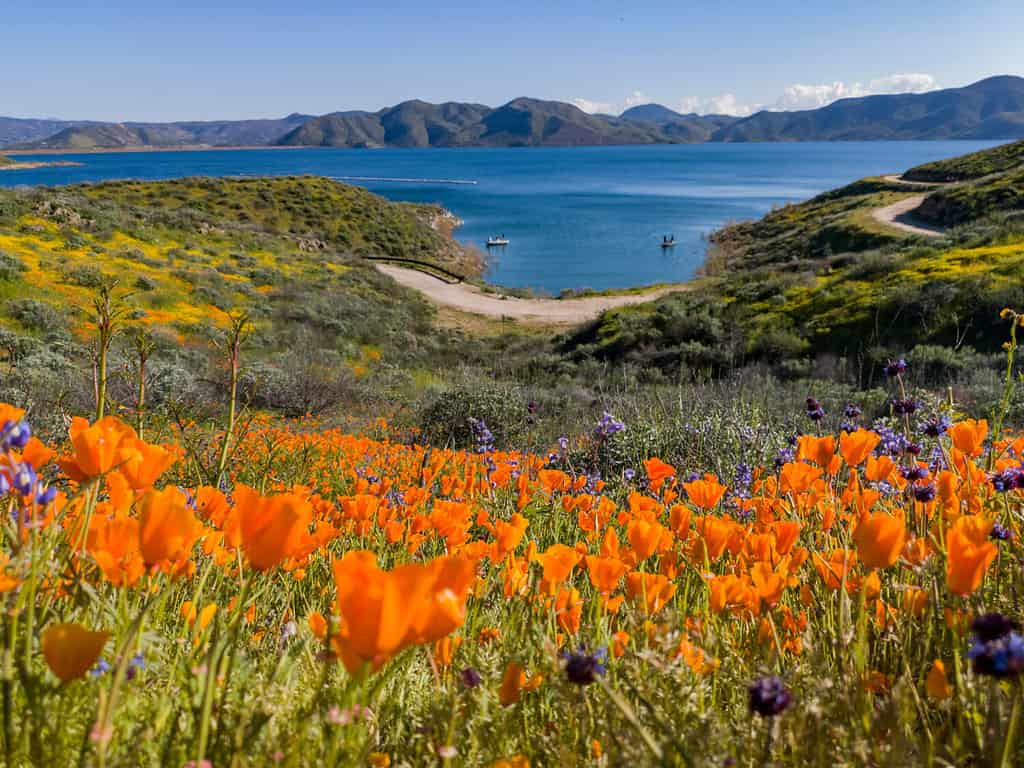
The California poppy, a bright and bold orange flower, is the state flower of California.
©Kit Leong/Shutterstock.com
Summary of the Largest Cities in California
| Rank | City | Population Per 2020 Census Bureau | Total Area | 2022 Economic Impact/GDP |
|---|---|---|---|---|
| 1 | Los Angeles | 3,898,747 | 501.55 mi² | 1.1 trillion USD (combined with Anaheim & Long Beach) |
| 2 | San Diego | 1,386,932 | 372.42 mi² | 225 billion (2021)* |
| 3 | San Jose | 1,013,240 | 203.70 mi² | 410 billion USD (combined with Sunnyvale & Santa Clara) |
| 4 | San Fransisco | 808,437 | 181.36 mi² | 669 billion USD (combined with Oakland & Berkeley) |
| 5 | Fresno | 542,107 | 116 mi² | 41.8 million (2021)* |
| 6 | Bakersfield | 403,455 | 151.28 mi² |
Thank you for reading! Have some feedback for us? Contact the AZ Animals editorial team.

